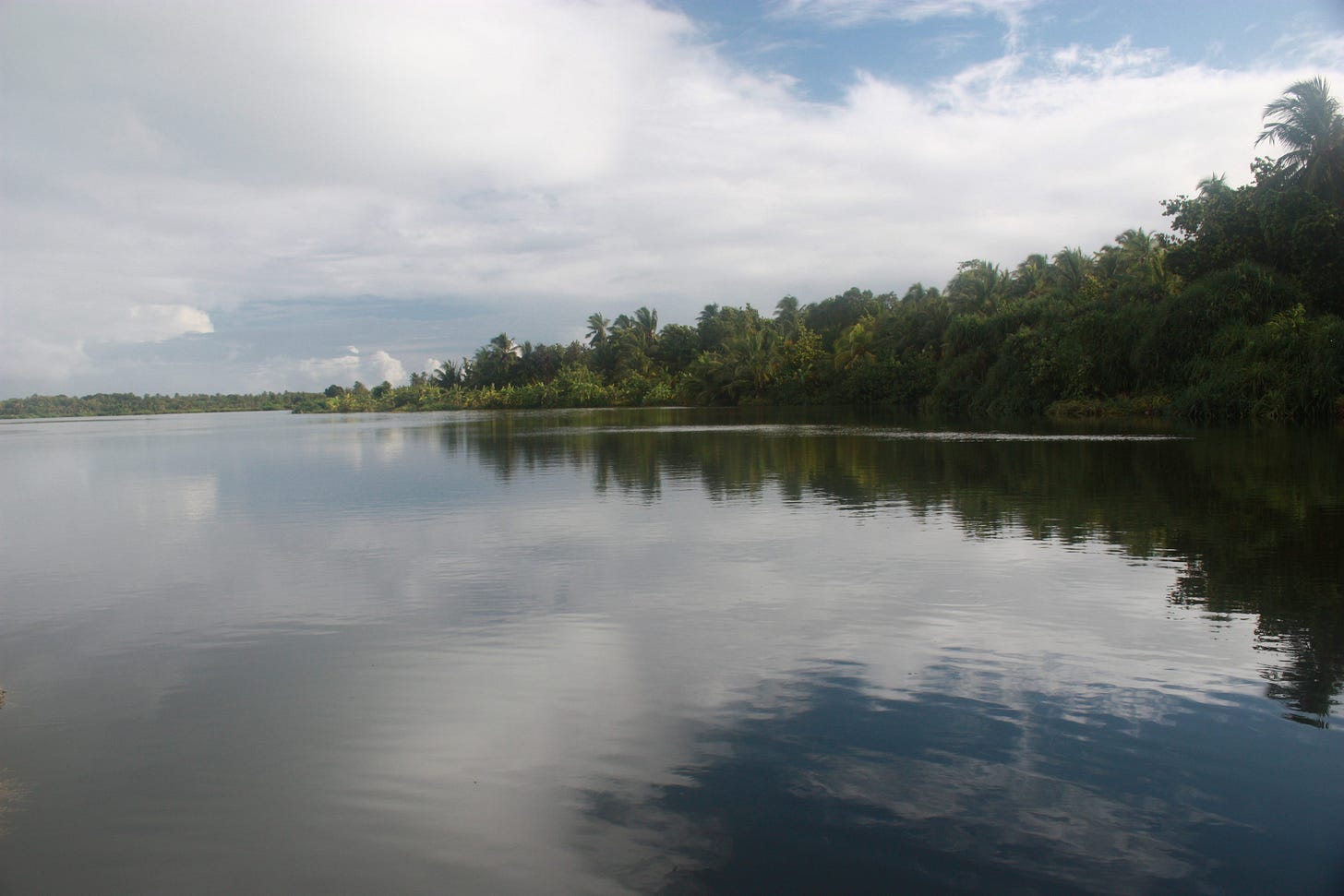Although every Maldivian island stands apart, all but one have close connections with their neighbours. The Maldives is made up of large atolls, each with many islands which are mostly only a few kilometres apart. Long ago, the residents carved channels and safe harbours out of the fringing coral reefs, giving easy access for boats. More recently, the calm water on the lagoons inside the reefs has allowed float planes to land, so many islands are accessible by air, even without airports.
But Fuvahmulah is an island alone. It isn’t part of a large atoll, and its nearest neighbours are forty kilometres away. But that isn’t what truly isolates the island. Fuvahmulah is unique among the Maldivian islands in that it has no fringing reef. The full force of the ocean’s waves crash onto its coastline. There have been harbours constructed there, but I’m told that arriving and departing by boat is always treacherous, and that there have been many shipwrecks and deaths. People came and went from Fuvahmulah, but it was always difficult. The island developed its own culture and dialect of the local language.
In 2011, an airport was built and Fuvahmulah became accessible. However, when I visited in 2014, tourists weren’t flocking there. There were a few guest houses (I stayed in one of a significantly higher standard than the one on Rasgetheemu), but no resorts. Maldivian resorts are built on their sheltered beaches and lagoons, and the wild coast of Fuvahmulah is unsuitable.
When I visited, Fuvahmulah might not have been attracting many tourists, but the Maldivians held a different view. The people I travelled with told me that it was considered to be the most beautiful of their islands. I should add that these people were not natives of Fuvahmulah so it wasn’t parochialism.
The typical Maldivian island is surrounded by coral reefs, turquoise water and white sand beaches, with graceful coconut palms and lush forest at its centre. To me, each of these islands appears exotic and exquisite. But I suppose it’s possible to become blasé about these tropical jewels just as I fail to get excited about the sight of a swamp. Maldivians love Fuvahmulah because it’s different.
The beaches on Fuvahmulah are wild and exhilarating. Every morning and evening, the group I was with ate at a restaurant on the northern tip of the island. Most days, we ate outside at a table on the sand, despite the ceaseless wind. The beach there had constant heavy waves which reared up seemingly out of nowhere within a few metres of the shore, pounded on the coarse sand and then retreated in seconds. The steep-sloping beach reminded me of Birdlings Flat in Canterbury, notorious for its powerful undertow. Locals loved the beach – there were always people there – but nobody went in the water.
One evening, heading back from a day looking at pest and disease problems affecting mango trees, we stopped at another beach which faced to the west. Again, it was filled with locals enjoying the evening. Again, the beach was wild and nobody went near the water.
It isn’t only the coast of Fuvahmulah which is different. Fuvahmulah has rich soil, swampland and two freshwater lakes. As a New Zealander, it’s hard for me to comprehend just how fascinating this is to a Maldivian. But among more than 1000 islands, Fuvahmulah is the only one with swamps and lakes.






